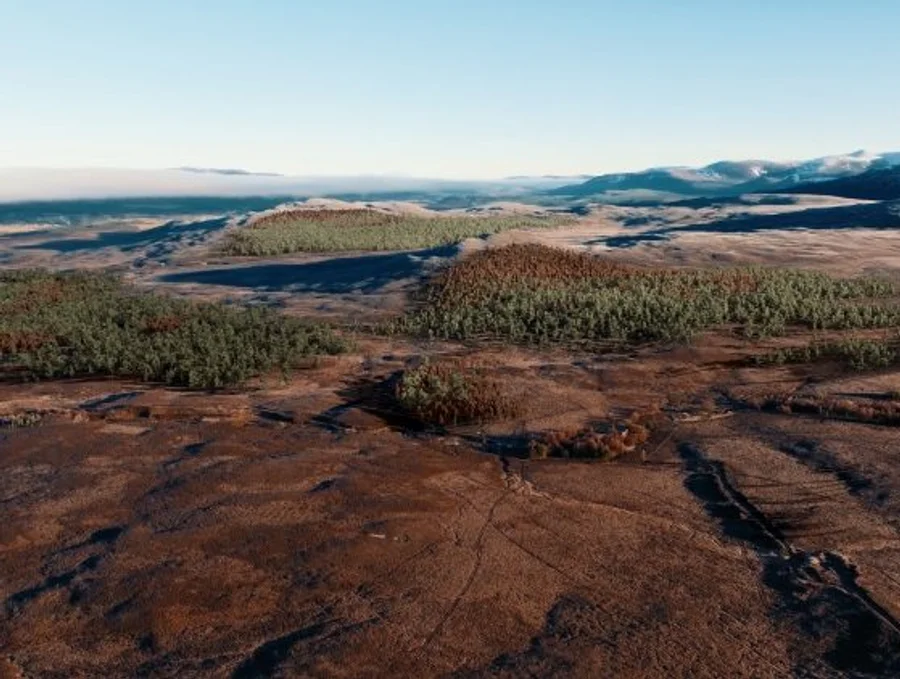Scrutiny is mounting on carbon credit schemes, but advocates like Knight Frank highlight the opportunities for transparency and biodiversity restoration.
It’s no secret: businesses are under pressure to become more sustainable.
The clock is ticking and companies around the world are racing to meet net zero carbon emissions targets, driven by regulatory demands and shifting consumer expectations.
But there’s a catch: for most companies, reducing greenhouse gas emissions—primarily carbon dioxide and methane—to zero is a logistical impossibility.
So, how are organisations ever supposed to achieve these goals? One solution that’s gained considerable traction in recent years has been carbon offsetting schemes. These schemes allow organisations to purchase carbon credits, which are essentially ways of accounting carbon emissions.
Carbon credits could allow companies to neutralise the emissions they cannot eliminate directly.
However, the efficacy and ethics of these credits have sparked heated debates in recent years with concerns over greenwashing.
Balancing the books with carbon offsetting
Carbon credits, representing one tonne of carbon dioxide equivalent (tCO₂e), function as tradable units enabling businesses to balance out residual emissions. These credits are generated through activities like afforestation, peatland restoration or soil carbon enhancement, which sequester carbon from the atmosphere.
James Shepherd, Partner for Rural Consultancy at Knight Frank, explains: “In volume terms, a single credit equates to around 560 cubic metres of CO₂ and these credits can provide substantial income for landowners engaging in sustainable practices.”
The potential for rural economies to benefit from carbon credit schemes is evident for all to see.
In the UK, estates and farms are tapping into this market, spurred by government-backed initiatives like the Woodland and Peatland Codes. Such programmes not only aim to sequester carbon but also promote large-scale biodiversity restoration.
One prominent example is the Far Ralia project, projected to deliver 346,000 carbon credits alongside ambitious nature recovery efforts.
The 3,668-acre site is located in Scotland’s Cairngorms national park. Knight Frank, the UK’s largest real estate agency, is advertising it at a cost of US$15.3m, which is a price that could entice wealthy companies from the UK or further afield.
Claire Whitfield, Partner at Knight Frank, describes the initiative as a landmark opportunity. “Far Ralia offers a unique and market first opportunity to invest in a fully funded afforestation and biodiversity enhancement project, sequestering an estimated 346,000 tonnes of carbon,” she explains.
However, the absence of robust regulation in the broader carbon credit market has led to significant concerns. Critics argue that offsetting enables polluters to delay meaningful action.
Greenwashing concerns and market integrity
Allegations of greenwashing plague both ends of the offsetting spectrum. On the supply side, doubts over the credibility of certain credits—particularly those tied to projects in developing countries—raise questions about their true impact. Reports suggest some credits may overstate their carbon sequestration benefits or fail to deliver on promised outcomes.
Meanwhile, buyers face criticism for using offsetting as a smokescreen for insufficient internal action. Critics argue that credits should not be a substitute for robust emission-reduction strategies.
Advocates of carbon offsetting acknowledge these issues but maintain that the system’s potential remains intact. Rich Stockdale, CEO of Oxygen Conservation, emphasises the importance of integrity: “We only work with businesses genuinely committed to reducing their emissions.
“Our credits are fully transparent, down to the specific trees capturing carbon. Purchasers can even visit the projects themselves.”
Oxygen Conservation is among the pioneers pushing for a high-integrity carbon credit market. Its approach highlights the dual objectives of offsetting: mitigating carbon emissions and addressing biodiversity loss. Stockdale’s team uses credits to fund expansive conservation efforts, reflecting a broader commitment to ecological sustainability.
The path forward for carbon markets
For offsetting to deliver real benefits, proponents stress the need for rigorous standards and accountability. The UK could be positioned to lead in this regard, thanks to its government-backed codes for woodland and peatland restoration. These frameworks provide transparency and oversight, setting a benchmark for other regions.
“The UK’s regulated schemes encourage large-scale, verifiable projects that genuinely sequester carbon while boosting biodiversity,” says James.
There is also growing interest in expanding these frameworks to include soil carbon, a potential game-changer for agricultural sustainability. Such initiatives would enable farmers to monetise regenerative practices, aligning financial incentives with ecological benefits.
Despite criticisms, Rich remains optimistic about offsetting’s role in the sustainability toolkit, if they are bought in good faith. This, for Rich and Oxygen Conservation, is what separates their business and some of the more controversial ones on the market.
“This is a real thing,” he says. “If you just buy a carbon credit from somewhere in the world from an online portal, what are you actually buying? You’re buying the right to pollute with an offset, whereas with our carbon credits you are buying an experience and that’s why we set the bar for who we will sell to very high.”



